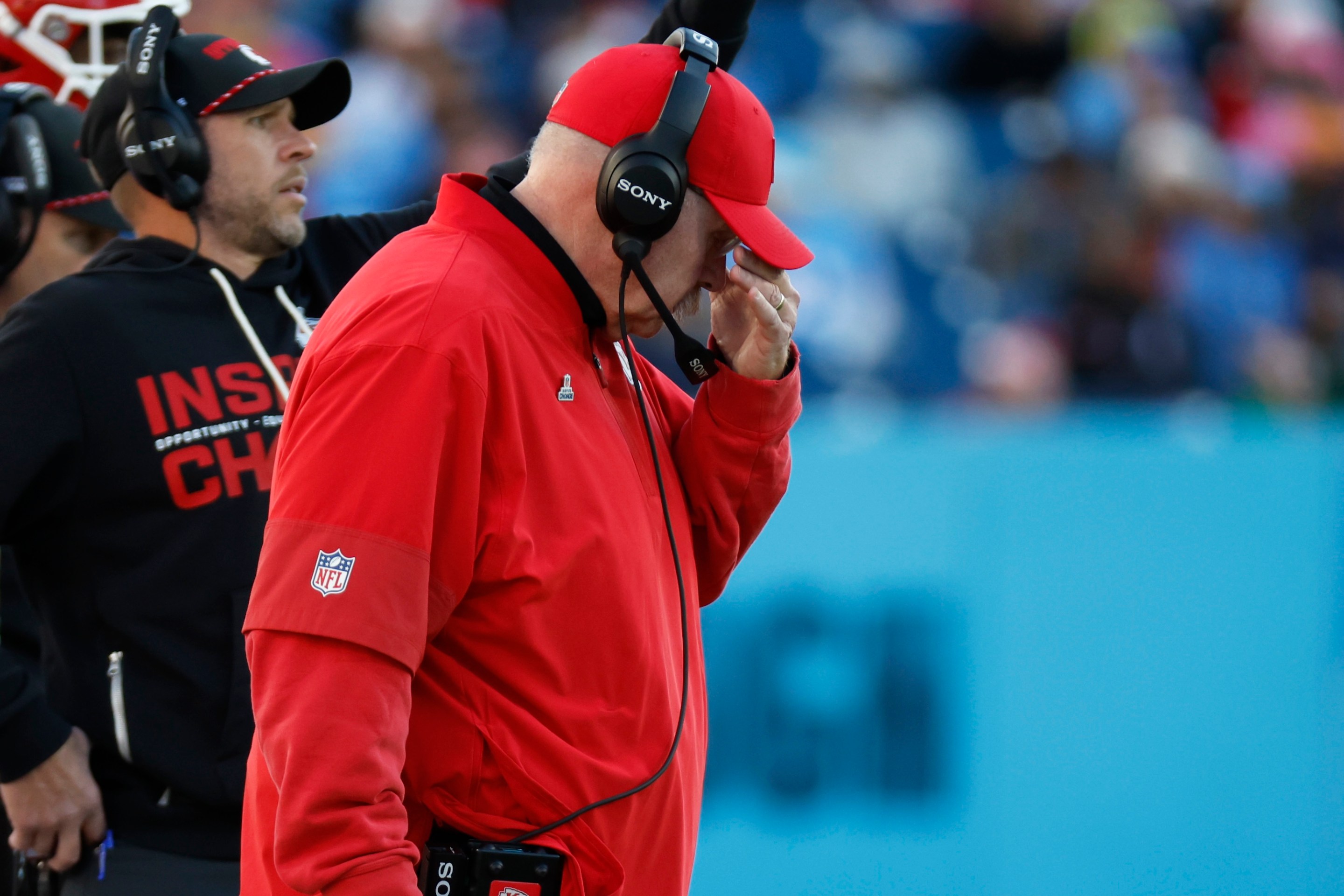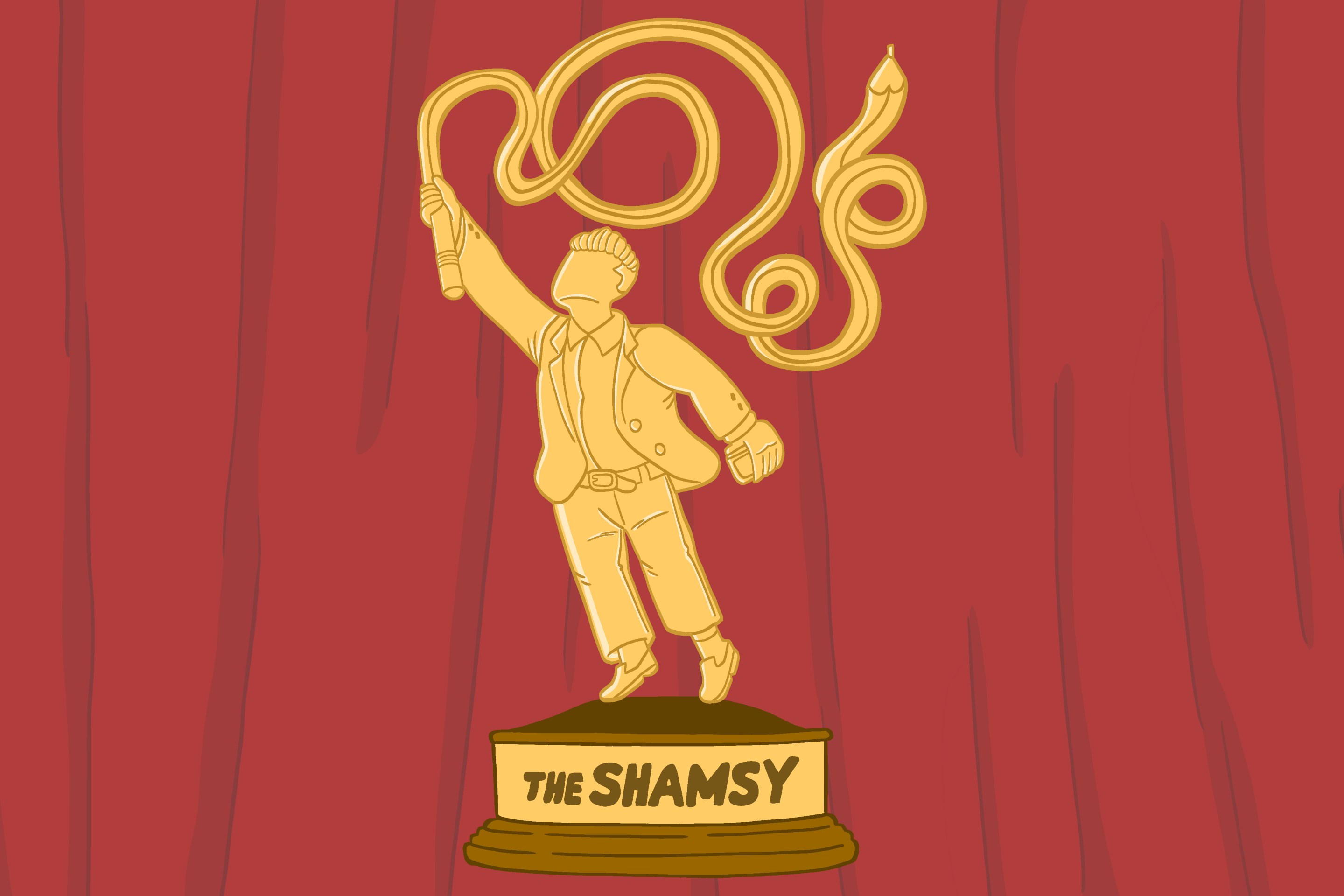Joy Binion learned that she had lost her job as a social science analyst at the Substance Abuse and Mental Health Services Administration, or SAMHSA, on April 1. So she posted on Facebook that she had been affected by a reduction in force, or RIF. A month later in a conversation with a friend, Binion mentioned the fact that she had lost her job. He reacted in total shock. "I thought that was an April Fool's joke," Binion's friend said of her Facebook post.
SAMHSA (pronounced sam-sah), which is housed under the Department of Health and Human Services, might not be a familiar acronym to most people. The agency supports Americans who suffer from mental health conditions and who experience addiction. SAMHSA operates the 988 Suicide & Crisis Lifeline, which has received more than 14.5 million calls, texts, and messages since it launched in July 2022. The agency also assists communities with grants for treatment and recovery centers, especially in rural areas where long distances from treatment centers act as a barrier to recovery.
Elon Musk's Department of Government Efficiency, or DOGE, has proposed rescinding $1 billion in funding from SAMHSA, cuts that will reduce the agency's workforce by 50 percent. Secretary Robert F. Kennedy Jr. plans to create a new agency called the Administration for a Healthy America, or AHA, and absorb multiple agencies including SAMHSA. These cuts face pending legal challenges, and Binion's termination was delayed after a judge's preliminary injunction. "I don't think people understood how much SAMHSA did," Binion said. "And a lot of the programs are being destroyed."
I spoke with Binion about her personal connection to mental health work, the value of peer support in the recovery process, and her fears around policy decisions made without robust data. (Binion spoke with me from her position as an individual, not on behalf of SAMHSA or any government agency.)
This interview has been edited and condensed for clarity.
How did you become interested in working in public health?
I've always wanted to help people, so I wanted to be a social worker. My dad said no to that, because [he said] they're burnt out and they don't make money. He wanted me to go in business, and I refused to do that. Anyway, I love education. My mom's an educator, so I got my degree in community health education.
I was raised in Prince George's County Maryland. Prince George's County Maryland was, for years ... the wealthiest black community in the entire country. One of the reasons why we were the wealthiest black community was just location. The reason for that is a lot of people—I would say 90 percent of my family—worked for the federal government. Everybody was outside of D.C. The federal government was a stable job. ... So growing up, the message from my father was, get a federal job. Get a federal job. Get a federal job. It's the most stable, and you're going to have the best benefits.
I worked in a hospital for a few years. I worked at the Baltimore City Health Department. When the Affordable Care Act went through in 2010, they added a lot of jobs to CMS, which is the Centers for Medicare and Medicaid Services. So I said, "Oh, I'm going to apply there." It took me four years to get into CMS. People don't realize how hard it is getting into the federal government. But I got in there, and I said, OK, I love it. I'm where I was supposed to be. I'm doing public service. ... I had to be what's called a contractor officer representative, or a COR. Basically you're overseeing all the contracts.
Six years into me being at CMS, my daughter had [psychiatric and mental health challenges], and [was diagnosed with] a serious mental illness. I was thrown into complete chaos. A mental disorder was not even in my periphery. I was out of work a lot. We're in year three or four of this, and my daughter's been hospitalized 10 times. ... Because I was thrown into mental health because of lived experience, I decided to switch my career to SAMHSA. Because I started seeing the cracks in the systems. But then I also saw some of the good parts in the system. I took a lot of classes just to better get ahold of my daughter. We have an awesome relationship now.
I went into CBHSQ at SAMHSA, which is the Center for Behavioral Health Statistics and Quality. I now have a certification in trauma. I also have a certification in crisis support, I started to do trauma-informed care. The goal was to better my relationship with my daughter. But then I realized that I liked it, and then I started running support groups.
SAMHSA really focuses on co-occurring substance abuse disorders and serious serious mental illness. Thank God they really focused on peer recovery support. These are all the types of things I've run into just from the lived experience with my daughter. Peer recovery support is, "I've had a mental illness, I'm in recovery. I had substance use disorder, I'm in recovery. And now I'm working to help people as they find their way through their journey." What I learned with my daughter was, these doctors and nurses, they will come in, but she's like, they don't know what I'm going through. But when you have a peer there, there's a level of empathy peers can give that other people can't give. ... SAMHSA put out this idea: We should have people in recovery actually giving the services.
They have this churn between hospital, homelessness, and jail, right? A lot of people with serious mental illness or a substance use disorder will go through this kind of churn. CBHSQ, the center that I was in, they did a lot of data collection. The data that we collected informed other programs and SAMHSA and also informed the public. They came up with jail diversion programs. I just did a support group, and a parent is in there. He's like, "Oh, my son's in jail again." ... I'm like, what happened? "Oh, he walked into a Walgreens naked." What about that screams, arrest this man? He's in psychosis.
[One service at] the Office of Treatment Services, it was FindTreatment.gov. We have a survey called N-SUMHSS, which is the National Survey of Mental Health and Substance Abuse. We're collecting all the data [from] all the facilities. So if you actually go to FindTreatment.gov ... they have a lot of filters. They say, here's the substance abuse facility near your house. Here's the insurance they accept. They [RIFed] all of us who run that program.
Could you talk about what an average day looked like for you in your role at the Office of Treatment Services?
I worked on DAWN as [one of] the [contracting officer representatives.] ... DAWN stands for Drug Abuse Warning Network. So what SAMHSA did, along in partnership with our contractor, is that we contracted with hospitals and emergency departments all over the country. We would go into the hospitals, and ... collect all of their data, [such as] emergency room visits based on some type of substance, any type of substance. But of course, a lot of the numbers that we saw were illicit drugs. So that could be either meth or heroin. There was a whole list. We monitored all the new drugs that we've seen.
Another part of my job was to help write the different manuscripts. They asked me to help because of my lived experience. The manuscript that I was working on before we got RIFed ... was state hospitals and psychiatric readmissions. So we're looking at the readmission rates and factors that either help or hurt the readmission rates, like a low number of beds.
We had so many different aspects of DAWN. From training the hospitals, to recruiting the hospitals, to training the abstractors, to looking at all the data that's coming through and trying to make a story of the data. Here are the new drugs we're seeing. We also wanted to be a real surveillance system where we had early warning. Early warning is that we have something called [a] sentinel hospital, which is a hospital in an area ... that's known to have high overdose stats. So we would collect data from that hospital, and we would see some of the new drugs that were coming. So we could say, [as a hypothetical example], hey, Minnesota, hey Minneapolis, we're starting to see a mix of Seroquel and meth. That's the new mixture that we're seeing ... Let's just say five patients in four weeks came through with the overdose of this new mixture, right? ... This combination of drug could be an issue. Then we would look to see what, DEA, the Drug Enforcement Agency, what are you seeing on the streets?
I would love if you could share your experience of learning about your termination.
I was at CMS during [Trump's] first term. That's what happens when you work for the federal government. No matter who's in office, you still have to serve the people.
February is when we started to get scared, and it just became toxic and chaotic. ... Everybody was shaking in their boots. My boss had to keep saying, we're going to go on like it's everyday business as usual. Then one time we had a meeting, she was like, "Yeah, we're gonna have this meeting on April 1 [assuming we're still here]." We were like, what? We're like, OK, are we getting RIFed? We don't know. So I think for the entire month of March, people were ready. Oh, we're going to get the RIF notices this week. Oh, we're going to get the RIF notices next week.
So many people in SAMHSA work for SAMHSA for the exact same reason I work for SAMHSA. Because you have lived experience, either with a family member or with yourself. The Office of Recovery, I would say a lot of them have lived experience. I don't think people just wake up one day and be like, I want to work for SAMHSA. A lot of people don't even know SAMHSA exists, right? ... SAMHSA had organizational groups, and one was a lived experience group. I was in that group, and a lot of them were like, yeah, we have to really implement our coping skills. Because recovery is an ongoing, lifelong thing, right? You have to actively stay in recovery. You would have some people like, "Yeah, I have upped my AA meetings from once a month to once a week now. Because I'm stressed. This anxiety is triggering a lot." It was very demoralizing. You feel like you're not good enough.
Now, I didn't go into the office only because I have multiple sclerosis. So I got a reasonable accommodation. ... A lot of people at SAMHSA, they've had lived experience. And people just have health issues. [Because of] all this stress, I had MS flare ups.
They did it on April 1. ... I woke up and I had eight messages from different coworkers. What happened was, so the building that SAMHSA and HRSA ... the Health Resource Services Administration. I think HRSA is in there. The Indian Health Services is in there. So I think it's three main government and NIH is next to us. And one of the NIH buildings are next to us. You got three different agencies trying to get in one building. This is in Rockville [Maryland]. It took them two hours to get into the building—[the] line was out there. This is how people knew: They would badge in, and if it was red, you were RIFed. You just hear people break down and cry. That took up the entire line. You just hear people wailing and screaming.
I wanted to just check if there was any other personal aspect to [your RIF] that you'd want to share?
I guess I took it for granted that the federal government has the best health care. I have multiple sclerosis. My drug is $80,000 a year. My daughter has been hospitalized 10 times. I remember calling my physical therapist. I was like, Yeah, you know, I was RIFed. I said, "Come June and I might have to switch my health insurance to United." They were like, but you have Blue Cross Blue Shield Federal. I was like, yeah. They were like, you know there's no other health insurance better than that, right? I said, "I know."
I run support groups, and all the cuts they're doing to SAMHSA, they're saying, "Oh, well, this was under DEI, right." But who's suffering? Who's dying? Who has a lot of the mental health issues? Who's disproportionately affected by mental illness and substance use? Yeah, it would be the populations that a lot of the DEI was targeting. Mind you, one of the main populations that went under DEI was rural [communities]. ... We had a good focus on the rural community, because they're not near the big city, and there was a whole [issue of] access to care. I'm really concerned for that.
I think it's going to take a long time for me to find another job. The financial insecurity is at times overwhelming. The destruction of SAMHSA was also very, very, very depressing. My concern is the infrastructure that SAMHSA has built, 20-plus years [of] building, their influence—they've made real systemic change. Especially with the early psychosis program. Especially with some of their family. Especially with 988, [the suicide and crisis hotline] was huge. Instead of calling 911 for a mental health crisis, call 988, right?
Even if I don't go back to SAMHSA or the federal government, I'll still be working in mental health. And I feel like this is going to make everything worse. I partner with NAMI, which is the National Alliance of Mental Illness, and they usually almost never comment on anything political. But they're out here saying we're concerned for the cuts to Medicaid, for the cuts to all the mental health block grants. The safeguards for behavioral health, the framework, this is a lot of complex needs, high needs population. I'm very, very concerned on what's going to happen with the population.
Can you foresee any immediate impacts?
All the data that we're collecting on all the healthcare systems, the opioid crisis, all that, the different substances, the psychosis, again, serious mental illness, we collect a lot of data on that—the data informs [policy.] We're not just making arbitrary political decisions, right? This goes for CMS too. At CMS we never, ever made a decision or wrote any type of policy without having some type of research or data, right? The data informs sound policy decisions. And I'm scared that that's going away.
What's so ironic about all this is SAMHSA was signed into law by [George H.W.] Bush, a Republican, and it was introduced to Congress by Edward Kennedy ... RFK, he's had past substance use struggles. We really thought, oh, well, RFK comes in, [and] he's going to really support us. ... ... But when it comes to mental health, he should be on board, right? SAMHSA has just been so instrumental in reducing the opioid overdose deaths. We've established the 988 mental health crisis response. ... We collect national data on mental health and substance use. We were really promoting the peer workforce. People with lived experience, let's get them in there. And we did it. We were looking at underage drinking. We were looking at youth with psychosis, with the early intervention programs. This infrastructure is going to be completely disrupted.
We're scared that some of the key programs are going to be eliminated. One of the reasons why I decided to [do this] interview is because I said, I don't think people realize how much SAMHSA did.
What happens when people who need services come in? What's going to happen to FindTreatment.gov when people are looking for services in their area? We're supposed to be a credible, trusted source. The government, your government, that you pay, is supposed to be a .. credible, trusted source. And I'm scared we're going to lose that.







